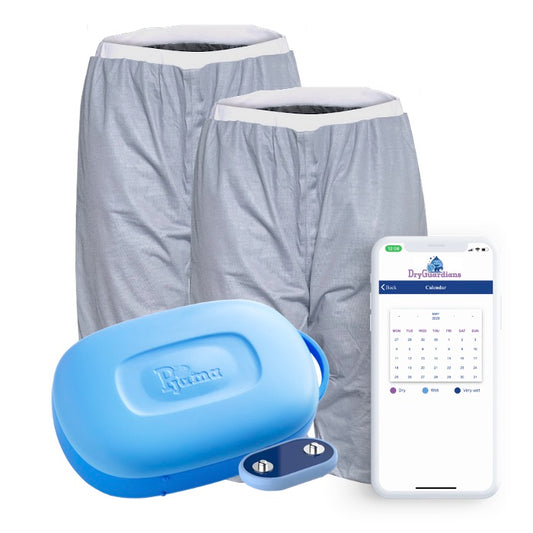TENCEL

Pjama is made out of Tencel. What is Tencel? Why use Tencel in a bed wetting product?
Tencel Lyocell is a form of Lyocell fiber that is naturally sourced and machine assembled from the botanic cellulose fiber of hardwood trees. It is a nanofiber, meaning it has a very small diameter. When woven into a fabric, it carries a higher thread count than many other materials.
What Properties does Tencel have?
Tencel is incredibly versatile, it is strong when dry and wet, silky, possesses good draping qualities and retains dye colors well. Tencel Lyocell fiber is also known for its hydrophilic, or moisture wicking properties, which allow it to disperse moisture through a capillary action that pulls moisture into the fabric itself, instead of leaving moisture film on the fabric’s surface. This makes Tencel an ideal choice for bedding and bed wetting products like Pjama, which by nature retain moisture and film which is known to increase the growth of allergens, molds, and fungi. Due to Tencel’s ability to help reduce moisture through wicking, and its smooth surface, it is considered a hypoallergenic product.
Tencel Lyocell fibers are round and smooth. Compared to cotton and wool, it is a considerably smoother surface for sensitive skin. The round shape of the Tencel fiber also makes it less prone to wrinkling than either cotton or wool.
How is Tencel Made?
Tencel is produced from hardwood pulp that is broken down mechanically, then dissolved so the cellulose strands may be extracted. These strands are then injected into a high-speed spinner and extracted then spooled. Once spooled, Tencel may be combined with other fibers such as silk, rayon, wool and cooling fibers like Nordic Chill, then further spun, and woven into a fabric.
Tencel is produced in a 99% closed-loop ecosystem, meaning that all chemicals and solvents utilized in production are recovered and reused or recycled. It is environmentally friendly, requiring both less water and land to produce a spool than cotton or wool.
What Fabric is Tencel in?
Its ability to combine with a wide range of other fibers means that Tencel Lyocell is present in a wide range of products as well as finishes. It is common to see Tencel in clothing such as jeans and shirts, specialty papers, mechanical applications like conveyor belts and household goods such as bedding. Perhaps the most effective application of Tencel is in sheets, pillowcases and mattress protectors. In these applications, Tencel Lyocell fiber’s silky texture, high strength, and hypoallergenic, moisture wicking properties provide what is considered to be an ideal sleep environment. That is why Tencel was chosen as the main material for Pjama pants to effectively protect the bed when wetting but also to make it comfortable for the wearer to sleep in.









